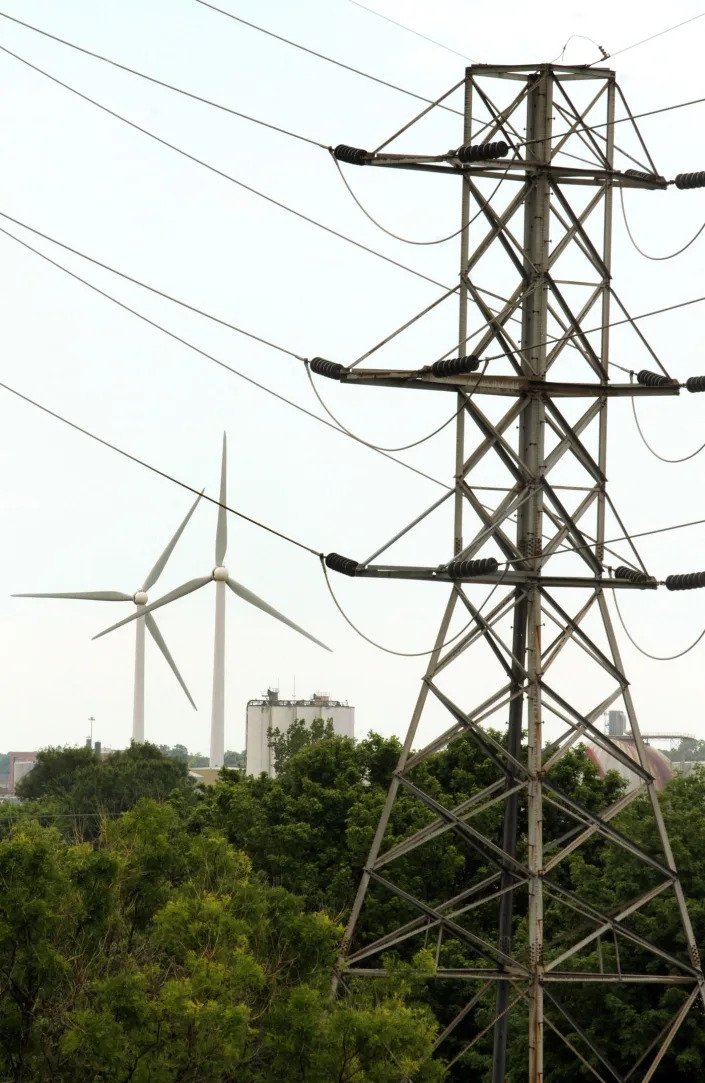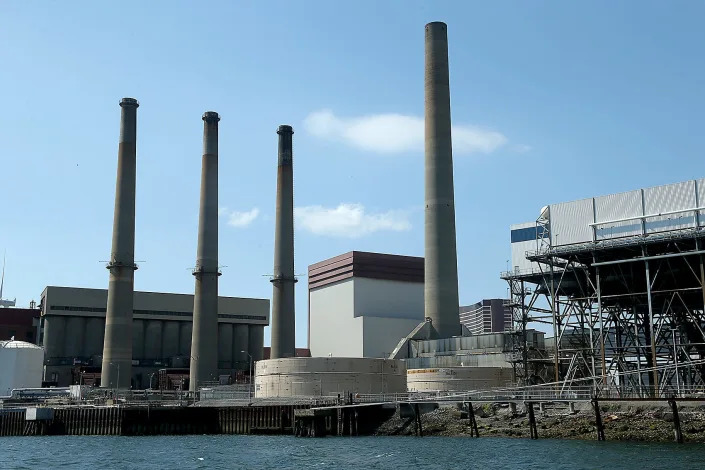“And I said it before and I will say it again,” she added. “How dare they?”
Philip Elliott
Mon, January 23, 2023

50th commemoration of the Supreme Court's Roe v. Wade decision in Tallahassee
Vice President Kamala Harris poses for photos with participants at the 50th commemoration of the Supreme Court's Roe v. Wade decision in Tallahassee Fla., on January 22, 2023.
As she started her closing cadence in front of an enthusiastic crowd, it was clear Vice President Kamala Harris was in her element—and remains both a misunderstood and potentially potent force in Democratic politics.
”Know this: President Biden and I agree, and we will never back down,” Harris said to applause in Tallahassee on Sunday, the 50th anniversary of the Roe v. Wade decision that once guaranteed the federal right to abortion. “We will not back down. We know this fight will not be won until we secure this right for every American.”
As Harris thundered through her remarks, with American flags behind her and supporters before her, she enjoyed that quality that has become all too rare in politics: credibility. Despite all of the political headwinds against her on the issue, Harris convinced many in the crowd that her promises were not only plausible, but within reach. “Congress must pass a bill that protects freedom and liberty,” she said.
The scheduled speech on a sleepy Sunday far from Washington—but in the backyard of both Florida Gov. Ron DeSantis and Donald Trump—would do little to move the national debate on federal abortion rights, which fell in June with a crash emanating from the Supreme Court. But Harris’ remarks and the reception—including 32 applause interruptions by the White House transcript’s count—served as a reminder that, even with plenty of bumps and detours during her first two years as a history-making Vice President, she still can bring the heat. And, in that, her fellow Democrats might slow their seemingly endless criticism of the first woman to hold the job, as well as the first person of Black or South Asian descent to earn it.
Harris, by all accounts, didn’t exactly launch her time as President Joe Biden’s understudy with ease. It seemed every quarter brought with it a new Harris Resets story in the political pages. In the administration’s early days, she largely filled her offices with veterans of the campaign—Biden’s, not hers. In fact, most of her high-profile aides from her Senate office and short-lived presidential bid scattered throughout the administration, landing perfectly admirable posts but not in her inner circle. The result was high turnover on her team, as well as a series of embarrassing stories about her treatment of aides.
Then, there was the scheduling challenge. Few Vice Presidents have had to contend with an evenly split Senate. Because of her ability to break tie votes in that chamber, Harris had to often make sure she was a quick motorcade from the Capitol. She has so far cast 26 such tied votes—or roughly 9% of all tie-breaking votes cast in the Senate since 1789. As such, she spent a ton of time in her office just off the Senate floor, often doubling as a deciding vote and informal congressional liaison to her former colleagues.
But, with Republicans now stuck at 49 votes, Harris’ 101st vote won’t be needed as often. (Of course, errant Democrats like Sen. Joe Manchin or Democrat-turned-independent Sen. Kyrsten Sinema can still gum up the math.) Now less encumbered by the Senate vote schedule, Harris is looking forward to getting back on the road, helping to sell the Biden team’s record and leading the charge on goals like securing voting rights and abortion rights—neither of which are likely to advance much under a Republican House—and selling the merits of legislation passed over the last two years, such as an infrastructure package and a climate change agenda.
Then there are questions of her future ambitions—always a fraught discussion that in D.C. can easily devolve into coded conversations about race and gender, two factors that simply cannot be ignored when it comes to Harris. Her defenders aren’t wrong to point out that the first woman of color in her role faces the double-whammy that separately dogged Barack Obama and Hillary Clinton. Harris’ original bid for the presidency ended before Iowa’s lead-off caucuses. By all accounts, she served as a capable and loyal running-mate.
Personally, Biden has great admiration for Harris, who served as state attorney general in California concurrent to the late Beau Biden’s time in the role in Delaware. As a former VP himself, Biden has sought to give Harris a portfolio commensurate with her talents, including the intractable troubles at the U.S.-Mexican border, voting rights, and abortion rights. Harris’ apologists grimly note those are all massive issues, each of them likely impossible for one person to significantly address; yet her boosters say they match Harris’ abilities to untangle knots.
Still, the relationship between Biden and Harris is complicated, made more so when Biden seemed like an uncertain contender in 2024. With Biden seemingly ready to launch his re-election bid, Harris’ dreams for a promotion are on ice. After all, no one challenges a sitting President with any meaningful success, especially not from inside the tent. But it does set up the test for Harris: if she is the party’s heir apparent—and not, say, Transportation Secretary Pete Buttigieg or Rep. Alexandria Ocasio-Cortez—Harris needs to rack up some successes to point to, whether they come due in 2024 or 2028. Biden may end up professing neutrality, but that gets tricky if he sees any suggestion of disloyalty.
All of which explains why Harris has made abortion rights a central piece of her political identity. Since Roe fell, she has met with leaders from 38 states, including lawmakers from 18 states. She’s been subtly making herself the voice with a megaphone no one can ignore.
During her speech on Sunday, Harris announced the Biden administration would protect access to mifepristone, the abortion pill. The Food and Drug Administration earlier this month finalized a rule that allows women to obtain abortion pills via telehealth consultations. Against this backdrop, Florida lawmakers are considering moving to ban abortions after 12 weeks—down from 15 there.
“Even in states that protect reproductive rights, like New Jersey, Illinois, Oregon, even there people live in fear of what might be next, because Republicans in Congress are now calling for a nationwide abortion ban,” Harris said. “Even from the moment of conception, the right of every woman in every state in this country to make decisions about her own body is on the line.”
“And I said it before and I will say it again,” she added. “How dare they?”
Such outrage over the fall of Roe powered Democratic candidates to unexpectedly strong showings in the midterm elections. Democrats defied history, holding steady in the Senate and only barely losing the majority in the House. Many point to her campaign travel schedule as proof that Harris played no small role in that accomplishment. By the time votes were being tallied, a full 27% of Americans counted abortion as the most important issue for their vote, second only to inflation. It was a surefire winner for Democrats, with those counting abortion as their most important issue breaking by a walloping 53 points. And among the broader public, according to exit polls, 59% of voters last year said abortion should remain legal.
If you’re Harris and seeing these numbers while still considering your next move, such data points are reason to lean-in on abortion rights. It has the added bonus of coming from a place of sincerity.
Kimberly Leonard
Sun, January 22, 2023

Vice President Kamala Harris listens as Japanese Prime Minister Fumio Kishida speaks to reporters before attending a breakfast at the Vice Presidents residence at the Naval Observatory on January 13, 2023 in Washington, DC.
Harris said federal officials will work to make the abortion pill more widely available.
She did in Tallahassee at a time when DeSantis is a leading potential 2024 White House contender.
Harris' invoked DeSantis-favorite themes of "freedom and liberty."
Vice President Kamala Harris directly hit Gov. Ron DeSantis of Florida over his "freedom and liberty" rhetoric and policies during a landmark abortion rights speech on Sunday in Tallahassee, showing a willingness by the Biden administration to take on the Republican rising star directly.
Her remarks signal that Democrats are working to flip the "freedom" script against Republicans, who have in recent years heralded it as their own amid Biden administration-imposed COVID restrictions.
None have done so more so than DeSantis, who called his forthcoming agenda for Florida the "Freedom Blueprint" and frequently refers to his home state as "the free state of Florida" or "the freest state."
"Can we truly be free if so-called leaders claim to be — I quote, 'on the vanguard of freedom' while they dare to restrict the rights of the American people and attack the very foundations of freedom?" said Harris, who didn't use DeSantis' name but was quoting directly from his 2022 State of the State address.
Harris's speech — right in DeSantis' home state by the US's first female vice president — comes just days after Florida health officials sent a letter to pharmacies warning them not to dispense the abortion pill mifepristone.
The vice president, who has been at the forefront voice for the administration's on abortion rights, announced that President Joe Biden would be signing a memorandum to make abortion pills easier to access. It'll have federal officials consider new ways for patients to get mifepristone, a medication that ends a pregnancy through 10 weeks of gestation. It would also direct those agencies to find ways for patients to access abortion "free from harassment, threats, or violence."
"Can we truly be free if a woman cannot make decisions about her own body? Can we truly be free if a doctor cannot care for her patients? Can we truly be free if families cannot make intimate decisions about the course of their own lives?" Harris, speaking delivered at a concert and nightclub venue the Moon, said.
Harris' speech follows a letter from Florida's Agency for Healthcare Administration, which said pharmacies were not allowed to dispense the abortion pill because under state law a doctor must be the one to give it to patients, after an initial meeting 24 hours earlier.
Seventeen other states have similar prescribing laws as Florida. But the Sunshine State is unique in that DeSantis may be only months away from declaring a 2024 presidential run. A Suffolk University poll released in early January shows DeSantis may have the edge on defeating Biden if he's the GOP nominee.
Democrats have warned a national abortion ban is possible if Republicans control the White House and Congress. "People live in fear of what might be next," Harris said during her remarks.
Congressional Republicans haven't coalesced behind a national abortion ban, though some such as Republican Sen. Marco Rubio of Florida have backed a national 15-week ban.
This month the Biden administration, through the Food and Drug Administration, allowed major pharmacy retailers such as CVS Health and Walgreens to provide patients with the abortion pill when they have a prescription, as long as the pharmacies complete a certification process.
Previously, patients could legally get the abortion pill through the mail after a visit with a doctor over telehealth, or when a doctor gave it to them at a clinic. It's not clear whether state laws will be able to override the FDA's decision, and a court ruling may be necessary to settle the answer to that question, reported Stat News.
More than half of abortions in the US are done with medication instead of surgery. Patients often will take another pill, called misoprostol, to trigger a miscarriage.
Sunday would have marked the 50th anniversary of Roe v. Wade, the Supreme Court ruling that guaranteed a national right to abortion. The conservative supermajority Supreme Court overturned the 1973 decision last summer, and since then some states have banned abortion and others have increased access.

Republican Gov. Ron DeSantis, speaks to supporters Tuesday, August 23, 2022, in Hialeah, Florida.
DeSantis has been gradually rolling out his agenda in recent weeks, though abortion is one area where he hasn't offered specifics. Asked about which abortion restrictions he'd be willing to sign into law, the governor has said only that he would "expand pro-life protections."
State lawmakers won't be meeting over the issue until March at the earliest when the legislature will begin its session. Florida Senate President Kathleen Passidomo, a Republican, said she would be open to restricting abortions to 12 weeks, but that a new law must include exceptions for rape and incest.
Florida already makes it illegal to have an abortion after 15 weeks through a measure DeSantis signed into law, though it's before the state Supreme Court.
Nikki Fried, Florida's former agriculture commissioner who lost the Democratic gubernatorial nomination to Charlie Crist, told Insider she feared DeSantis would go further to restrict abortion rights during this forthcoming legislative session to appeal to GOP presidential primary voters.
Stephanie Loraine Piñeiro, co-executive director of Florida Access Network, which helps coordinate patient travel, lodging, and expenses related to abortion, told Insider that she was worried Florida would force a complete ban on medication abortion.
"Our dignity, bodily autonomy, and right to self-determination should be protected and we ask this administration to enact immediate measures to protect and expand access to abortion care," Piñeiro, who attended Harris' speech, said.
During her remarks Sunday, Harris urged Congress to vote for the Women's Health Protection Act, saying it would "protect freedom and liberty." The bill has no chance of passage because Republicans control the US House.
Instead, the House passed legislation that would criminalize doctors who fail to provide neonatal care following a botched abortion late in pregnancy. It won't be taken up in the Democratic-controlled Senate, who — like doctors who perform late-pregnancy abortions — have argued that later abortions occur mainly in cases of severe fetal anomalies.
No robust data exists on the reasons couples choose third-trimester abortions, and such cases make up less than 1% of total abortions in the US, show studies from the Centers for Disease Control and Prevention.
The DeSantis War Room mocked Harris on Twitter for talking about "freedom" after having speech attendees sign a letter attesting they were fully vaccinated against COVID-19.
The Republican Party of Florida directly addressed the abortion issue and called Harris a "far-left radical."
"Democrats are proudly cheerleading barbaric policies to allow unrestricted abortions — including infanticide," RPOF said. "That's all anyone needs to know."
The Women's Health Protection Act that the Biden administration backs does not allow for post-birth termination but until fetal viability, which is generally understood to be at about 24 weeks into a pregnancy. It also allows abortions after viability for "health" reasons but doesn't specify whether this means physical, psychological, or emotional health, or whether someone's age can also be a factor.

Former Florida Agriculture Commissioner Nikki Fried ran for the Democratic nomination for governor in 2022. SHE COULD HAVE BEAT DESANTIS UNLIKE USED TIRE CRISTI
Florida has other ways of expanding abortion rights
Abortion rights proved to be a liability for Republicans in the November midterms.
In early January, DeSantis was also attacked from the right for his abortion policies. Ian Fury, South Dakota governor Kristi Noem's spokesman, criticized DeSantis for "hiding behind a 15-week ban" in comments to National Review.
"Does he believe that 14-week-old babies don't have a right to live?" Fury asked.
Senior Biden administration officials said during a phone call with reporters Wednesday that the Biden team picked Florida for Harris to make her speech about abortion rights given the state's 15-week abortion ban, which doesn't have exceptions for rape and incest.
Still, they added that Florida was "a place that offers greater access than its neighbors" because surrounding states have abortion bans that begin even earlier in pregnancy.
Reproductive rights groups are working to put the issue of abortion before Florida voters through a 2024 ballot measure. Fried told Insider that advocates were still early in the process as they worked to get the precise, legal language of the ballot correct. After that, the work of gathering signatures will kick off.
Fried plans to be involved in any way she can, whether through fundraising or holding press conferences, she told Insider.
"We still have a fight ahead of us to protect a woman's right to choose," Fried said. "We are not going to let go. We are going to keep fighting for this issue and we are going to organize to be at the forefront, and we are not going to back down."










.jpg)
